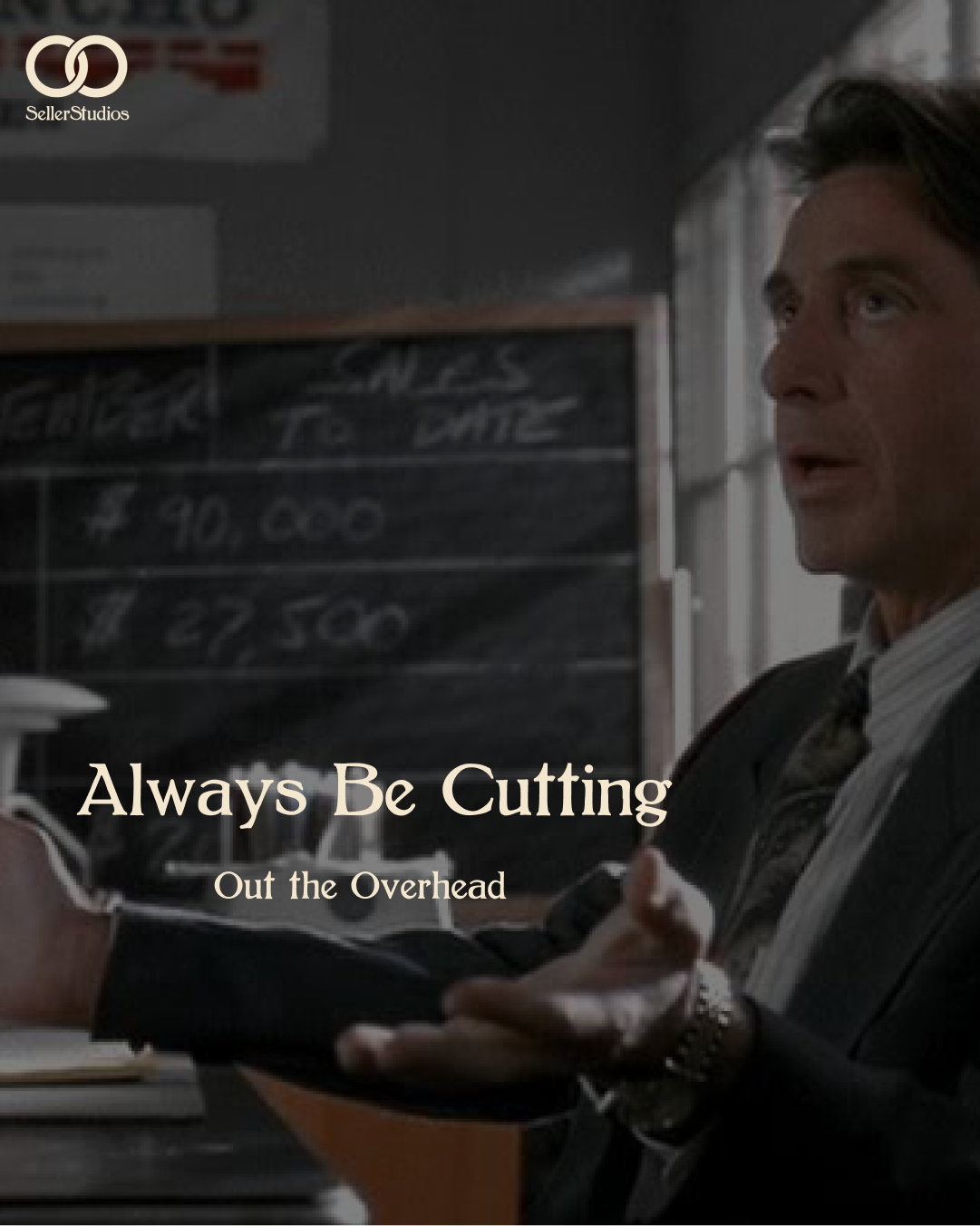Always Be Cutting (Out the Overhead)













If you’ve spent any time building your personal style, you might relate: I feared I had expensive taste. Not because I chased brands, but because I liked designs only big fashion houses seemed to make. And of course I noticed them first—they spent to be seen.
Unwilling to drop designer bread at the time, I swore they couldn’t be the only ones making the clothes I wanted. I researched retailers, designers, along with the technical components of fashion and started to uncover brands outside the marketing machine. I found a jacket whose construction, materials, and design could fetch $750+ at familiar designers for ~$200 at Sunflower. A considerable amount, no doubt, but we were getting somewhere. It started to become clear that smaller, leaner brands could deliver the same quality for less because they run on less overhead.
It’s not just clothing. Anywhere overhead is baked in, it can inflate what you pay.
Just about every week, I pick up 5 avocados, a bag of navel oranges, and the rest of my regular produce from Aldi, a grocer who’s actually focused on food. The German retailer’s business model is no-frills, low-cost groceries. There’s no fancy marketing, no lavish store designs, and it ain’t but 3 people working there. I pull up for groceries, pay for groceries, and leave with groceries. You go nearly anywhere else and you’ll pull up for groceries, pay for groceries plus the extra square footage required to stock the thousands of items you’ve never even seen, and still leave with the same groceries. It’s not about being cheap—if high quality food is your bag, hit the farmer’s market. Just don’t mistake cost for value. There’s another necessity of life where overhead is even more sneaky: housing.
Since graduating from student housing, I’ve lived in apartments that are owned and managed by individuals. While looking for places, these rose to the top of my list not because they were the cheapest, but because they were the cheapest for what I got. The locations were good, spacious, and generally the nicest for their respective property types (garden apartment and loft). When you rent from individuals renting their home or former home, you’re mostly paying their mortgage and maintenance. Renting the shiny corporate-owned unit means paying for the pool, dog park you’ll never use, staff, offices, and, of course, the single-digit return the investors expect.
I didn’t realize it when I started looking for apartments in DC, but it quickly became obvious: condos almost always meant renting from an individual rather than a company. Once I noticed that, my filters shifted, and it changed how I evaluated every listing. This same principle became more vivid when I looked at clothing.
The more channels I explored—words, videos, images—the more obscure and exciting the labels became. Designer houses, fast fashion, and otherwise familiar brands dominated visibility, but these smaller designers rarely paid for ads. I almost always found them off the strength of their work. Eventually, I found creators I already followed launching their own brands. Because I understood their aesthetic and taste, I knew I could trust their designs would actually deliver what I wanted. I copped a pair of wool trousers from one dude for $200. In terms of cut, materials, and construction, they could easily fetch multiples more at a familiar designer. On top of a relatively cheaper price, there was a delivery on the most substantial promises of “supporting small businesses”: smaller sellers can deliver more of the product’s value straight to you, because they operate with less overhead. And while smaller designers already give you more bang for your buck, buying secondhand can take you ten more yards.
A pair of boots I sold recently is a perfect example. I listed them on Grailed, a clothing marketplace, for $237, and the buyer was ready to pay around $260. But after fees and shipping, I would’ve only netted about $180–$190. After realizing he was local, we met up instead. No money off the top, and both of us came out better. Now, those fees aren’t useless. They ensure the marketplace can provide a decent, useful service, and a lot of people get value from it. But shiny marketplace apps are not the only option. If you operate with some discernment, you can do better—peer-to-peer transactions let more of your money go straight to the product or the seller, cutting out all that extra overhead. It’s another layer of “buy leaner,” and it works whether you’re buying or selling.
People who know me have seen me crash out when I start paying for stuff I didn’t actually want. Don’t get me started on real estate commission fees or the multi-payer healthcare system. The way I’m keeping off the cortisol is by remembering the simple things—stay aware of the incentives behind every transaction, and stop paying for the packaging. It’s not about avoiding marketplaces or companies or never buying from a brand other people have heard of; it’s about putting more of your cheddar into what you care about.





